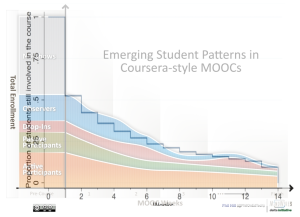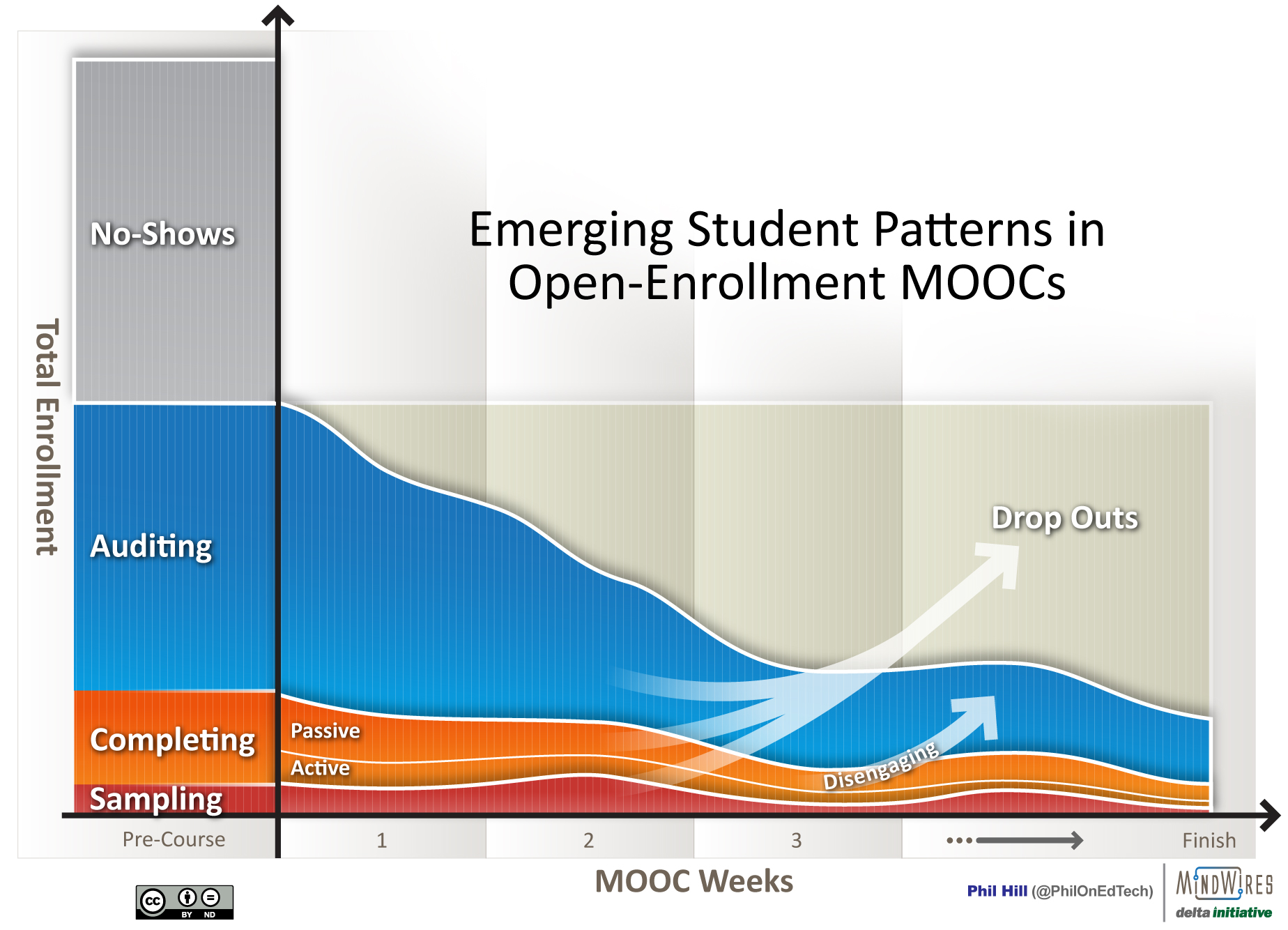In part 1, part 2, and part 3 of this series of posts on MOOC student patterns, I shared a description of five student patterns emerging from open-enrollment MOOCs (excluding those with an associated student fee) based on anecdotal data. In part 4 I compared the overall course completion pattern against an MIT study of the first edX MOOC, leading to some validation of the general shape of when participants drop out.
The model and typology has gained traction recently, being referenced in both the Government of Ontario’s environmental scan and literature review [pp 32-33, 40] as well as the British government’s The Maturing of the MOOC literature review [pp 26-28]. So that means it’s time to update and keep people on their toes.
At the LAK 13 conference this past spring a team of researchers from Stanford (René F. Kizilcec, Chris Piech and Emily Schneider) presented the results of a study of three computer science MOOCs with the goal to:
present a simple, scalable, and informative classi cation method that identifi es a small number of longitudinal engagement trajectories in MOOCs.
The entire report is worth reading to understand their methodology and additional findings.
The Stanford study identified four trajectories that aligned quite well with the patterns in the graphical model described in the previous posts. I believe that there is value in adjusting the graphical model to adopt the Stanford terminology where possible. The approach taken is as follows:
- Rename ‘Observers’ as ‘Auditing’;
- Rename ‘Drop-ins’ as ‘Sampling’;
- Combine ‘Active Participants’ and ‘Passive Participants’ into a combined category now named ‘Completing’;
- Add the ‘Disengaging’ trajectory; and
- Keep the ‘No-Show’ trajectory not found in the Stanford study.
The result is the following typology [note that the descriptions combine language from the Stanford report and the previous graphical description]:
- ‘No-Shows’: appear to be the largest group of those registering for an open-enrollment MOOC, where people register but never login to the course while it is active.
- ‘Completing’: learners who completed the majority of the assessments offered in the class. Though these participants varied in how well they performed on the assessment, they all at least attempted the assignments. This engagement pattern is most similar to a student in a traditional class. ‘Passive’ participants are students who might watch videos, take quizzes, read discuss forums, but generally do not engage with the assignments and post in discussion forums. ‘Active’ participants are the students who participate in the majority of assignments and post in discussion forums.
- ‘Auditing’: learners who did assessments infrequently if at all and engaged instead by watching video lectures. Students in this cluster followed the course for the majority of its duration. No students in this cluster obtained course credit.
- ‘Disengaging’: learners who did assessments at the beginning of the course but then have a marked decrease in engagement (their engagement patterns look like Completing at the beginning of the course but then the student either disappears from the course entirely or sparsely watches video lectures). The moments at which the learners disengage differ, but it is generally in the first third of the class. A subcategory includes ‘Drop Outs’ who cease all course activity.
- ‘Sampling’: learners who watched video lectures for only one or two assessment periods (generally learners in this category watch just a single video). Though many learners “sample” at the beginning of the course, there are many others that briefly explore the material when the class is already fully under way.


[…] Hill is sharing a new iteration of his model for MOOC participation over on the e-Literate blog. The whole post (and the earlier related posts) are worth the read, […]